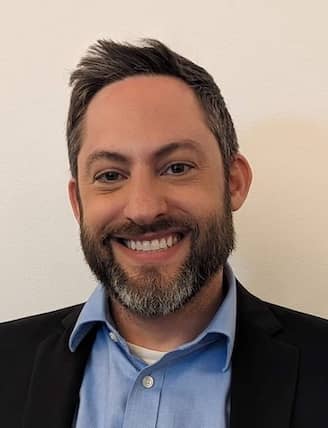USDA loan closing costs: What they cover and how to pay them
Contributed by Karen Idelson
Sep 9, 2025
•6-minute read
Imagine a first-time homebuyer finds a dream home but worries they won’t have enough cash to cover a down payment and closing costs. Thanks to the United States Depart of Agriculture (USDA) home loan program, homes in eligible rural and suburban areas may be available with no down payment, among other favorable terms.
Other costs due at closing include fees for services from the appraisal and title work to taxes and insurance. But there’s potentially good news there as well. With a USDA loan, there are several ways to reduce these costs or even roll them into your loan, making homeownership even more accessible.
Here’s a closer look at common USDA loan closing costs, who pays closing costs on a USDA loan, and how mortgage loan borrowers can use a USDA loan to reduce up-front costs by rolling them into the loan balance.
What are USDA loan closing costs?
As with other home loans, the process of buying a home with a USDA loan involves paying for several services and fees. Those are a mix of loan-related costs (e.g., origination fee), property-related costs (e.g., title insurance), and government fees (e.g., county recording fees).
Those closing costs for a home purchase typically add up to around 2% to 5% of the home’s purchase price. For example, if you bought a property for $250,000 with a USDA loan, your closing costs may be somewhere between $5,000 and $12,500. Closing costs are reasonably similar with both USDA and conventional mortgage loans, but USDA loans may give you more flexibility in how you pay.
What do USDA loan closing costs cover?
USDA closing costs for home loans include several common fees and service charges. Here are some of the closing costs you can expect, regardless of whether it’s a USDA loan or another type of mortgage loan:
- Home appraisal fee: When you get a mortgage, you’ll need to get the home appraised. During this process, an appraiser will inspect the home and factor in market conditions, including the sales prices of recently sold homes that are comparable to the subject property, to determine the home’s fair market value. The buyer typically pays for this service to be completed, and the cost will be included in their closing costs.
- Credit report fee: This fee covers the cost the lender incurs when pulling the borrower’s credit report.
- Mortgage origination fee: This is the fee the lender charges to process and underwrite the loan. Underwriting is the process of verifying that the borrower qualifies for the loan.
- Discount or mortgage points: When a borrower pays discount points at closing, they’re paying money to reduce their interest rate by a certain amount. This is an optional cost.
- Title insurance: The title company provides a title search and title insurance. Title insurance protects you if there are claims against the home’s title. Buyers will pay for a lender’s title insurance policy, which insures the lender against title claims on the home, as part of their closing costs. The seller often purchases the buyer’s title insurance policy, paying for it as part of their closing costs.
- Escrow setup fee: This covers the cost of utilizing an escrow account to hold funds that pass between the buyer and seller.
- Recording fee: This fee covers the cost to have your municipality update its public records to reflect the change in ownership of the home.
- Taxes and insurance: At closing, you may need to pay a homeowners insurance premium, a mortgage insurance premium, and property taxes for the property you’re buying. USDA loans require that an escrow account be set up for these taxes and insurance payments.
- Notary fee: If you need a notary public to visit you for the loan closing, you’ll need to pay their fee, too.
- Prepaid property taxes and insurance: You may have to pay a prorated portion of the year’s property taxes and insurance at closing, even when you’re planning on using escrow for those costs on an ongoing basis.
Unique to the USDA loan is the USDA guarantee fee. This added charge costs borrowers 1% of the loan value up front or 0.35% annually.
Who pays closing costs on a USDA loan?
As you’re preparing for a down payment and other closing costs, it’s essential to know who pays closing costs on a USDA loan. The buyer pays most fees by default, but there are plenty of exceptions.
- Seller concessions: With USDA loans, a seller can pay up to 6% of the purchase price to offset closing costs for the buyer.
- Lender credits: Lenders may be willing to cover a portion of closing costs in exchange for a higher interest rate. This is done as mortgage points.
- Gift funds from family: If you have generous and willing family or friends, they may be willing to help you out with the closing costs for a new loan. In this scenario, you may need a gift letter, which proves the funding source and that it doesn’t have to be paid back.
You can also get a larger loan amount, which leads to a lower down payment, or you can effectively do the same by rolling closing costs into the loan. We’ll get into this in more detail below.
Can you roll closing costs into a USDA loan?
Yes, you can roll closing costs from a home purchase into a USDA loan. However, that’s only the case if the appraised value exceeds the purchase price. You can’t borrow more than 100% of the property value, plus the guarantee fee.
For example, if you’re buying a home with a USDA loan and the home appraises at $250,000, you can get a loan for that amount plus your $2,500 guarantee fee (1% of the loan amount). That’s a maximum mortgage of $252,500.
Typically, you can’t pay for your closing costs using your loan (also referred to as rolling in your closing costs). However, USDA loans allow borrowers to roll some or all of their closing costs into their mortgages if the home appraises for more than the sales price. In this situation, you’d use the extra loan amount to cover the closing costs. Not all home buyers qualify.
You’re also allowed to roll your closing costs into your loan when you get a USDA streamline refinance.
Pros and cons of rolling closing costs into your loan
Pros:
- Lower out-of-pocket costs: Paying less up front frees up cash for other needs and helps preserve your bank account.
- Keeps cash free for moving expenses: Even a local move can cost many thousands of dollars. Paying fewer closing costs leaves cash to pay for the move.
- Can make buying feasible sooner: Saving a down payment plus closing costs can be challenging. When you lower your initial costs, you may be able to buy a home sooner.
Cons:
- Increases total loan amount: While you may pay less up front, you’ll pay the amount back through a higher total loan balance.
- More interest paid over time: With a higher loan balance, you’ll pay more in total interest over the life of the loan, assuming you only make the minimum payment each month.
- Slightly higher monthly payment: The difference shouldn’t be significant, but it factors into the repayment calculations.
If you’re not sure what makes the most sense, consider consulting with a trusted loan officer or financial advisor.
FAQ
What is the USDA guarantee fee, and can it be rolled into my loan?
The USDA requires an initial 1% guarantee fee, which can be rolled into the loan amount. There’s also an ongoing annual 0.35% guarantee fee. Guarantee fees go into a fund that backs loans in the program, reducing the risk to lenders and encouraging them to offer financing with no down payment to applicants who might not otherwise qualify.
What happens if my appraisal comes in low?
If the home appraises for less than the purchase price, you won’t be able to roll your closing costs into the loan. In that case, you may need to renegotiate with the seller or cover the difference out of pocket. If you believe the appraisal missed the mark, you also have the option to request a second appraisal to ensure the home’s value is accurately represented.
The bottom line: USDA loan closing costs can be handled several different ways
USDA loans provide rural home buyers with an affordable way to purchase a home, with the major benefit of buying a home with as little as $0 down. However, they still come with some noteworthy costs, including an added 1% USDA loan guarantee fee at closing.
Rocket Mortgage® does not offer USDA loans currently. Whether you’re looking for a USDA loan, a VA loan, a conventional loan, or any other mortgage, a first-time homebuyer class can help you prepare for a successful home-buying experience.

Eric Rosenberg
Eric Rosenberg, is a financial writer, speaker, and consultant based in Ventura, California. He holds an undergraduate finance degree, an MBA in finance, and is a Certified Financial Education Instructor (CFEI®). He is an expert in banking, credit cards, investing, cryptocurrency, insurance, real estate, business finance, and financial fraud and security.
He has professional experience as a bank manager and nearly a decade in corporate finance and accounting. His work has appeared in many online publications, including USA Today, Forbes, Time, Business Insider, Nerdwallet, Investopedia, and U.S. News & World Report.
Related resources
5-minute read
Down payment assistance programs and grants: What they are and how they work
Need help buying a home? Explore the different types of down payment assistance programs and grants available to you today.
Read more
4-minute read
First-time home buyers classes: A guide
A first-time home buyers class can help you feel better-prepared for the home buying process. See what you can expect from a class for first-time home buyers...
Read more

5-minute read
USDA construction loan requirements: Everything you need to know
Learn USDA construction loan requirements, who qualifies, what to expect, and how one can help you buy land and build your dream home with a single loan.
Read more